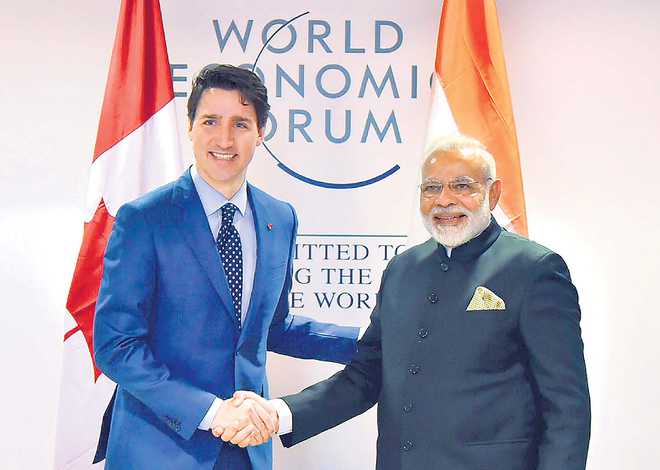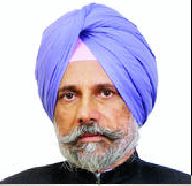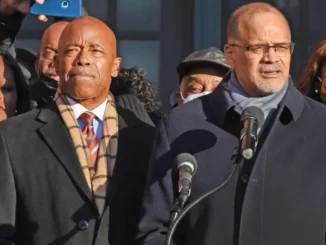
Dealing with Pakistan; renewing ties with Canada

“Pakistan, Trudeau and Khalistanis need to be engaged not pilloried, while detoxifying the nation of bigotry and falsehood”, says the author.
“The one issue that still rankles bilateral relations is the activities of “Khalistani” elements in Canada and their links, if any, with Pakistan’s ISI. It played last year into the visit of Canadian defense minister, Lt Col Harjit Sajjan, when Capt Amarinder Singh literally boycotted him, piqued over the Canadian government denying him a visa before the Punjab election last year.”
India-Pakistan relations under the Modi government are in a cryogenic state. A muscular response, advocated by PM Narendra Modi, has become not a means, but an end in itself. Despite “surgical strikes” and periodic cease-fire violations, the Pakistan army remains defiant. With elections around the corner in Pakistan and rumors Modi may advance the Lok Sabha elections, the scope for any meaningful dialogue appears bleak.
India draws much solace from President Donald Trump’s periodic verbal assaults on the duplicity of Pakistani state and military. The US withholding military aid, amounting to $2 billion, including $900 million in coalition support funds to compensate Pakistan for its counter-terrorism operations along the Durand Line (Pak-Afghan border), is a first step to ratchet up pressure on Pakistan. US government sources are telling the media that there is an escalation plan if Pakistan does not heed the warnings. The action that the US seeks is Pakistan severing links with the Taliban and the deadly Haqqani network. The same source told Washington Post that there was “immense” frustration over Pakistan continuing to deny that there were any Pakistani safe havens for these groups.
Senior US officials touring India recently displayed guarded optimism over change in Pakistani attitude. They take the cue from Pakistan not threatening to disrupt US supply routes via Pakistan. But recent terror attacks in Kabul, where an ambulance bomb caused severe casualties, negate that finding. Earlier a hotel was attacked, frequented by Afghan government officials and foreigners, in which among others, a senior police commander and a member of the High Peace Council were killed. The hotel attack on the topmost floor indicated that the attackers were well briefed as that floor normally is reserved for officials holding sensitive positions.
Meanwhile, Pakistan blocked access to Hafiz Saeed when a team deputed by the UN Security Council sanctions committee arrived to assess Pakistan’s handling of a listed terror mastermind. Reports keep resurfacing that Pakistan was in the process of allowing the India-specific terror syndicates to enter the political field. This could be a double-edged sword to both legitimize the groups and undercut the Sharif brothers, who control the Pakistan Muslim League (N), in the forthcoming parliament election. China has been more forthrightly defending Pakistani credentials as a nation fighting terror and not abetting it.
Against this background, two events invite attention. First, the Economist carried a story earlier this month on the reform of Pakistan’s school education. This has gone unnoticed in India as the dominant narrative is that Pakistan is a collapsing state which will soon end up in a big Islamic heap. The story holds a lesson for our Punjab. Under the direct leadership of chief minister Shahbaz Sharif, a private-public partnership (PPP) has successfully developed to rectify the skewed school completion data. The richest Pakistanis have 60 per cent completing nine years of schooling. For the poor, the number is 5 per cent and for the middle income group, a mere 25 per cent. A donation-based citizens’ foundation today has over 2 lakh students in its schools. Similarly, the Punjab Education Foundation, a quasi-independent body, is doing the same work even on a larger scale.
The PPP works with the Shahbaz government handing over public schools to private partners and then closely monitoring their work while providing some subsidy. A Harvard University study shows that village schools saw 30 per cent higher enrolment after private parties were brought in. It has also been discovered by other studies that teachers on contract, who are paid less, produce as good or better results. A similar revamp of the primary and secondary school education in our Punjab is long overdue. CM Shahbaz takes a three-monthly meeting of all stakeholders to monitor the progress of this reform. Can the Punjab CM, Capt Amarinder Singh, do likewise?
The other event is the expected arrival of Canadian Prime Minister Justin Trudeau on a five-day visit on February 17. Among other cities he would be visiting Amritsar. The one issue that still rankles bilateral relations is the activities of “Khalistani” elements in Canada and their links, if any, with Pakistan’s ISI. It played last year into the visit of Canadian defense minister, Lt Col Harjit Sajjan, when Capt Amarinder Singh literally boycotted him, piqued over the Canadian government denying him a visa before the Punjab election last year.
Trudeau’s visit provides a good opportunity for Capt Amarinder to bury the past. Sikhs constitute almost 40 per cent of the total population of Indian diaspora in Canada which numbers over a million. That huge number needs to be engaged and their energies channelized to contribute to Punjab’s development. The population profile of the Canadian Sikh diaspora is different from that in the US. The Canadian Sikhs are more closely linked to peasantry in Punjab. A number of episodes have riled Delhi as the Canadian government is seen as handling mischief-makers with kid gloves. When I dealt with them in 2006-07, the Canadian explanation was that they monitor the goings-on but would only step in if violence or terrorism was imminent. Slogans in favor of Khalistan are really solitary cries for attention. The Canadian Sikh fringe needs to be politically dealt with. Banning their entry into India will only exacerbate the situation.
If Punjab was the laboratory of the Green Revolution, it now needs to reinvent itself. A revamped education system, a shift away from the rice-wheat agrarian model, laying of food-chain supply network and conservation of water aquifers and adoption of sustainable development goals. It is not a surprise that a recent study showed that South Indian states, which have the advantage of coastlines for connectivity, have cornered the export businesses of India. A new Punjab model could become the 21st century template for the land-locked and largely agrarian economy states of the North.
The Modi government, having largely ignored rural distress, has awakened post-Gujarat election. Udayan Mukherjee wrote in another newspaper that the Modi government’s strategy was: “more wealth for the rich, Hindutva for the poor”. Religion may be, as Karl Marx quipped, the opiate of the masses. But when used to polarize for electoral gains it can be catastrophic. Thus Pakistan, Trudeau and Khalistanis need to be engaged not pilloried, while detoxifying the nation of bigotry and falsehood.
(The author is a former Secretary, Ministry of External Affairs)





Be the first to comment